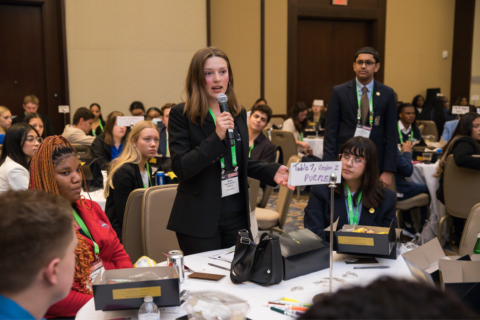As city leaders work to create vibrant, inclusive, and thriving cities, it’s important for them to understand the unique challenges and opportunities presented by different populations. One specific demographic garnering attention is opportunity youth and young adults (OYYA), individuals who are typically aged 16 to 24 who are neither in school nor working. Addressing the needs of OYYA can significantly impact school completion and youth unemployment rates in your city, while also fostering economic mobility. Here are four key aspects city leaders should be aware of when embarking on collaborations with OYYA:
- Defining Opportunity Youth and Young Adults. (OYYA) refers to youth and young adults who are currently not in school or working. Traditionally known as disconnected youth, Measure of America, a research and advocacy program of the Social Science Research Council, reported about 5 million youth could be categorized as OYYA in their 2021 report. This number was on a steady decline until the COVID-19 pandemic hit, resulting in millions of youth out of the workforce and into virtual classrooms, making it easier for youth to become disconnected.
- Cities are increasing their efforts to support OYYA. In February 2022, NLC launched its Reengaging Opportunity Youth in the South (ROYS) initiative and provided TA to eight cities expanding their reengagement endeavors and establishing reengagement programs. These cities join the efforts of several dozen cities that have already established structures to reengage OYYA, and many more could benefit from partnership approaches to doing so. You can find a map of all our network members here!
- School districts and local workforce boards often join cities to develop reengagement programs. Schools and workforce development boards have traditionally led the effort to engage OYYA with the goal of getting them back into schools or into employment pathways. For example, Boston Public School partners with the city’s Workforce Development Board, Boston Private Industry Council to engage youth as they become disenrolled at their local school district. During the summer they host a door-knocking event utilizing their “district leaver” list to find students who did not re-enroll for the following school year.
- Supporting OYYA takes a community effort. OYYA become disconnected for various reasons, often including mental health challenges, unstable housing, or childcare barriers. Whatever the reason – they often need support connecting to other resources, such as housing, academic support, counseling, food, etc. This requires community efforts to ensure OYYA has their basic needs met. Opportunities for Youth in Phoenix, AZ partners with various community organizations to ensure youth have access to Wi-Fi, mental health services, immigration support, food, housing, and much more!
NLC supports cities and communities looking for ways to engage their OYYA through the NLC Reengagement Network. NLC staff for the Network host quarterly meetings, create resources and program templates and send out regular resource emails. There are over 40 reengagement sites, three state networks, and over 700 individuals currently participating in the Network.
Join the network to begin reconnecting OYYA in your community. If you have questions regarding the NLC Reengagement Network, OYYA or want resources you can email Reengagement@nlc.org







